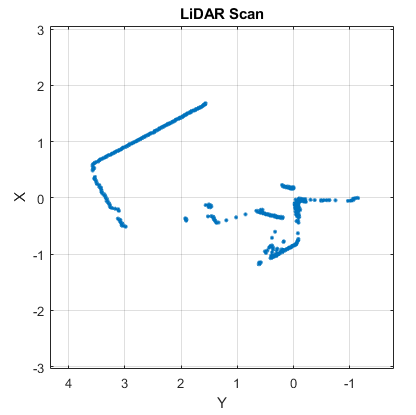read
Syntax
Description
scan = read(hokuyoObj)hokuyolidar2d
object hokuyoObj, and stores the read data in a lidarScan object,
scan.
[
returns the intensity value corresponding to each data point.scan,intensities] = read(hokuyoObj)
[___] = read(___,ScanAngleLimits=
specifies the lower and upper limits of the scan angles for reading the lidar scan data, in
addition to any combination of arguments from previous syntaxes.scanAngleLimits)
Note
This feature requires the Lidar Toolbox™ Support Package for Hokuyo™ Lidar Sensors. You can install the support package from the Add-On Explorer. For more information, see Download and Install Lidar Toolbox Support Package for Hokuyo Lidar Sensors.
Examples
Input Arguments
Output Arguments
Version History
Introduced in R2024a
